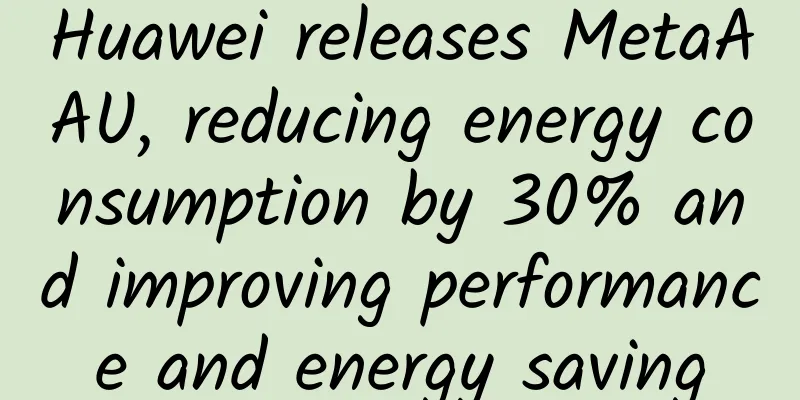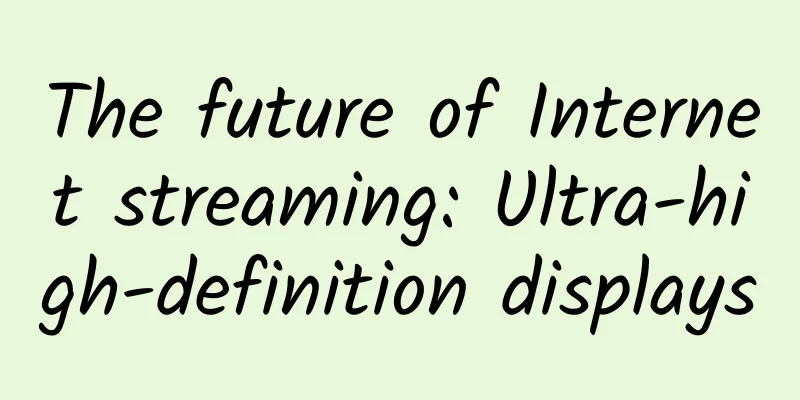Huawei releases MetaAAU, reducing energy consumption by 30% and improving performance and energy saving

|
Today, at the China (Beijing) International Information and Communication Exhibition, Yang Chaobin, President of Huawei's Wireless Product Line, released the Massive MIMO innovative product MetaAAU. MetaAAU introduces ultra-large-scale antenna array technology, and through algorithm, architecture, software and hardware integration innovation, it achieves both performance and energy saving, opening up a new direction for Massive MIMO. Yang Chaobin, President of Huawei's Wireless Product Line, delivered a speech at the China (Beijing) International Information and Communication Exhibition The pursuit of lower bit cost and bit energy consumption is the driving force behind Massive MIMO's continuous innovation Since the commercialization of 5G, the medium-frequency large bandwidth combined with Massive MIMO technology has realized the original intention of 5G and brought consumers a 10-fold experience improvement. The killer experience of 5G is changing consumer habits; on the one hand, consumers use mobile networks more to access the Internet, and mobile network traffic is increasing exponentially. It is expected that mobile networks will carry more than half of Internet traffic in 2030; on the other hand, with the popularization of short videos, live streaming and other services, the development of rural digital economy, rural network traffic has grown rapidly, and the growth rate of rural mobile network traffic is higher than that of urban traffic. Yang Chaobin said: "The large bandwidth of the mid-frequency band combined with Massive MIMO technology can effectively increase cell capacity, cope with traffic growth, and reduce network bit costs. This is the basis for China to build the best 5G network." The coverage capability of the mid-frequency band is weaker than that of the low-frequency band. The traditional solution to improve base station coverage is to increase the RF transmission power, but this can only improve downlink coverage and cannot break through the uplink coverage limitation; increasing the transmission power will also lead to an increase in module energy consumption, which conflicts with the green energy-saving goal. How to improve coverage, increase capacity, and continuously reduce network bit costs while reducing bit energy consumption is the driving force behind Massive MIMO's continued innovation. MetaAAU introduces ultra-large-scale antenna array technology, combining software and hardware to balance network performance and green energy saving The larger the AAU antenna array, the narrower the channel beam, the more focused the channel energy, and the longer the coverage distance. MetaAAU introduces ultra-large-scale antenna arrays to improve uplink and downlink coverage without increasing the transmission power. Yang Chaobin said: "Ultra-large-scale antenna arrays are an important innovation direction for improving coverage and reducing energy consumption. MetaAAU integrates innovations in new architectures and new algorithms to achieve both network performance and green energy saving, helping operators build high-quality green 5G networks." MetaAAU introduces a new architecture, doubling the size of the antenna array, improving both uplink and downlink coverage; without increasing the transmit power, it improves the edge user experience. At the same time, the adaptive high-resolution beamforming algorithm AHR Turbo allows the service channel beam to point to the user more accurately; adaptive beam optimization intelligently adapts to user wireless channel changes to improve air interface resource utilization efficiency; high-resolution beam domain noise reduction improves multi-user pairing efficiency. AHR Turbo allows MetaAAU to "align accurately", "follow quickly", and "pair well", greatly improving user experience and cell capacity. Tests show that compared with the traditional solution, MetaAAU can simultaneously improve the uplink coverage of the cell by 30% and the downlink coverage by 30%, and the average experience of edge users can be improved by 25%. When the cell edge coverage index remains unchanged, the base station can be configured with a lower transmission power, thereby reducing the energy consumption of the base station, which is about 30% lower than the traditional AAU. Yang Chaobin emphasized at the end of his speech: "Huawei will not stop innovating. We will continue to innovate and consolidate the wide-pipe basic network with continuous coverage. At the same time, we will continue to evolve in the areas of large uplink, large connections, and precise positioning for the future 5.5G, improve network capabilities, and contribute to China's continued leadership in 5G." |
>>: Virtual operators in the 5G era: new opportunities and challenges coexist
Recommend
LowEndTalk (LEB) 2020 Low-End VPS Voting Ranking
A few years ago, LET often carried out voting act...
Wall Street's largest securities service platform brings blockchain technology to the CDS market
[Original article from 51CTO.com] According to Bl...
In 2017, the wireless and mobile sectors welcomed multiple favorable factors and the pace of industrial development accelerated.
[[180647]] The bell of 2017 has rung. Facing the ...
Enterprise 5G: A guide to planning, architecture and benefits
Enterprise 5G deployments require extensive plann...
Can 20M Wi-Fi be used as 100M broadband? Let me share some knowledge
Sometimes I hear friends ask such questions: My r...
What is Intelligent Edge Computing?
You’ve heard of edge computing. You may have even...
Sharktech: Los Angeles 1Gbps unlimited traffic server starting at $59/month, 60Gbps defense
Sharktech is restocking its promotional models th...
2019 6th World Internet Conference: Inspur releases iGIX enterprise digital capability platform
[51CTO.com original article] From October 20 to 2...
Who made a comeback! Operators' February data: China Unicom's 5G business ushered in a highlight moment
[[389252]] Yesterday, the three major operators a...
DogYun Korean Classic Cloud is now available at 30% off, starting from 17.5 yuan per month or 175 yuan per year
I received a message from DogYun that the Korean ...
Wi-Fi Sense: Your home's next sensor may not be a sensor
Part 01 How Wi-Fi Sensing Works Wi-Fi sensing is ...
12 minutes to help you understand the OSI seven-layer model and the TCP/IP five-layer model
1. OSI Reference Model 1. Origin of OSI OSI (Open...
9 steps to a trouble-free Wi-Fi upgrade
In many offices, Wi-Fi represents the great break...
Three-minute review! A quick overview of 5G industry development trends in September 2021
After the rapid development in 2020, 2021 is a cr...
Five-minute technical talk | HTTP evolution history
Part 01 Protocol Introduction HTTP is the most po...









